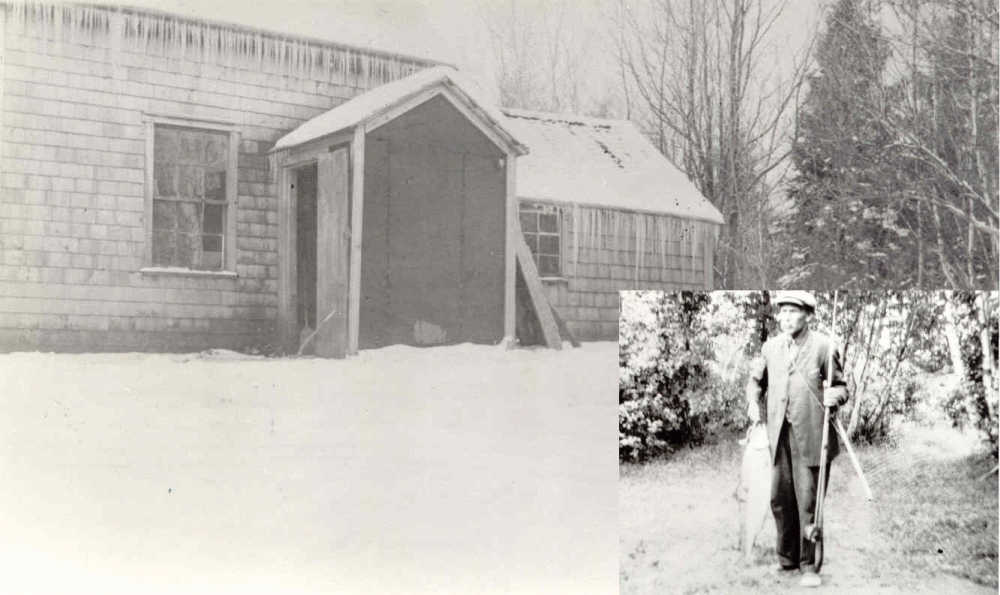
Leonard Road/DAR Corridor: The Haggai Luxey House
Leonard Road/DAR Corridor: The Haggai Luxey House
Architecture Style: Gothic Vernacular
Built: Before 1930
Haggai, the last Mi’kmaq of Paradise, stands here with a salmon caught in the Annapolis River. He lived with his family- Ellen, and their children: Steve, Lena, Suse, and Rose.
The old British garrison at Annapolis Royal called the Mi’kmaq people “The River Indians”. They lived in the great hemlock and pine forests of the province in the winter, but when the ice left the river and the waters warmed they came to their summer camps along the Annapolis River, at least one of which was in Paradise. Later they would be confined to a reserve on the south side of the river, and east of the “Head of the Tide.” Under the French regime before that, they had their own traditional campsites. They willingly shared the land with the Acadians, who did not cut down the forests.
With reason, Haggai called the Annapolis River “My river.” For countless generations of Mi’kmaq, it was a primary source of food, a means of travel, a spiritual centre. The river provided the good fat eel which was the favoured fish to eat, smoke, and preserve for long winters. Indeed, the Mi’kmaq name for Paradise means “Place of Eel Weirs”. The weirs were constructed across brooks, or in shallow places in the river where the tide rose and fell. When the tides flowed out, the eels were left behind in the nets, wriggling high and dry. Salmon and other fish abounded. Long after the first Planters homesteaded in Paradise, a farmer on his hay marsh could look up and see the Mi’kmaqs canoeing down the river, paddles gleaming, to attend a special event. Strong and sure, they passed silently around the curve of the river on the way to a Mass, funeral, or gathering. To a young poet in 1907 (W.I. Morse), the scene was “a part /Retold in all their life and dialect.” (The Narrowing Path, 1933). After the French defeat at Louisbourg, Mi’kmaqs struggled for their very survival. Claiming their treaty rights, the Luxeys lived in the fields of James S. Leonard. The family insisted that they move, and Haggai built his home by the railroad, on the “Queen’s land”, which he felt was his. He lived beside the gravel pit the railway builders had left, known as “Haggai’s pond”, a favourite skating pond. He loved to welcome young skaters.
Haggai and his sons were renowned among tourists and locals as fishing guides. When Haggai died in 1941, aged 108, his obituary said, “…none knew the pools or the art of fishing as well as he… He was the patriarch of the Micmac Indians in Nova Scotia.”
